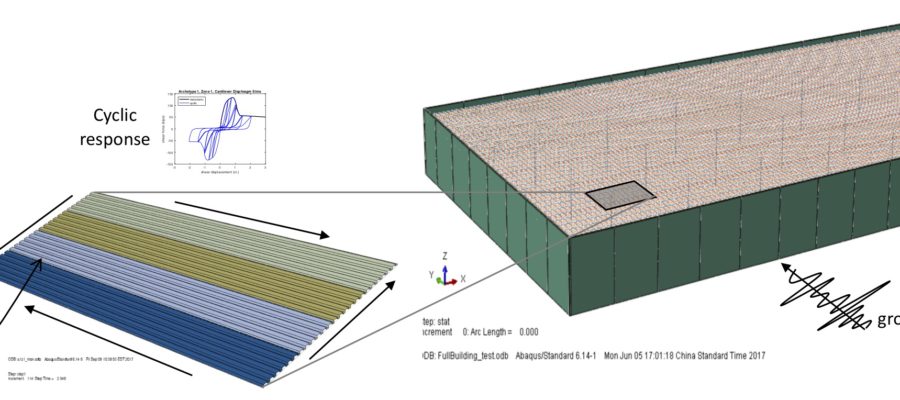SDII investigator Ben Schafer released a report: “Research on the Seismic Performance of Rigid Wall Flexible Diaphragm Buildings with Bare Steel Deck Diaphragms” in the DSpace collection of CFSRC in support of proposed new provisions for seismic design of “Big box” buildings with bare steel deck roofs. The report provides the background research performed by Professor Schafer and by NBM Technologies to develop seismic provisions for improved performance of bare steel deck diaphragms in these buildings. The full abstract for the report follows.
Report Abstract: The objective of this report is to provide a summary of the research activities conducted in 2018 by the author in support of developing seismic design provisions for Rigid Wall Flexible Diaphragm (RWFD) buildings with bare steel deck diaphragms. This work followed a 2 year experimental and computational study conducted by NBM Technologies which the author participated in. That work, in turn, followed a multi-year study summarized in FEMA P-1026 which concluded that RWFD buildings are common and current seismic design methods are inadequate. Further FEMA P-1026 provided a new design philosophy for wood roof diaphragms that has been initially codified and is expected to appear in ASCE 7-22. The work conducted herein employs a 3D model of RWFD buildings with bare steel deck roof diaphragms to assess their seismic performance. The multi-scale model is built up from fundamental connection testing, and nonlinear shell finite element simulations of cantilever diaphragm tests. The model results are complemented by an in-depth study of existing data related to the ductility of bare steel deck diaphragms. The model predicts that steel deck which is mechanically fastened to one another and to the underlying building frame, perform well under high seismic demands in RWFD buildings. However, steel deck that is welded, while having adequate strength and stiffness, is unable to develop the inelastic redistribution that can be required in RWFD buildings. A re-assessment of the work underlying FEMA P-1026 leads to the conclusion that the new design philosophy proposed in FEMA P-1026 can be extended to bare steel deck diaphragms, so long as they are able to develop the ductility and deformation capacity observed in properly detailed mechanically fastened bare steel deck diaphragms. Detailed and specific reasoning is provided to address the reservations that had been previously noted in FEMA P-1026 with respect to steel deck diaphragms in RWFD buildings. Future work remains to develop more sophisticated strategies for resilient steel deck diaphragm roofs and to more fully utilize the 3D building models developed herein.
